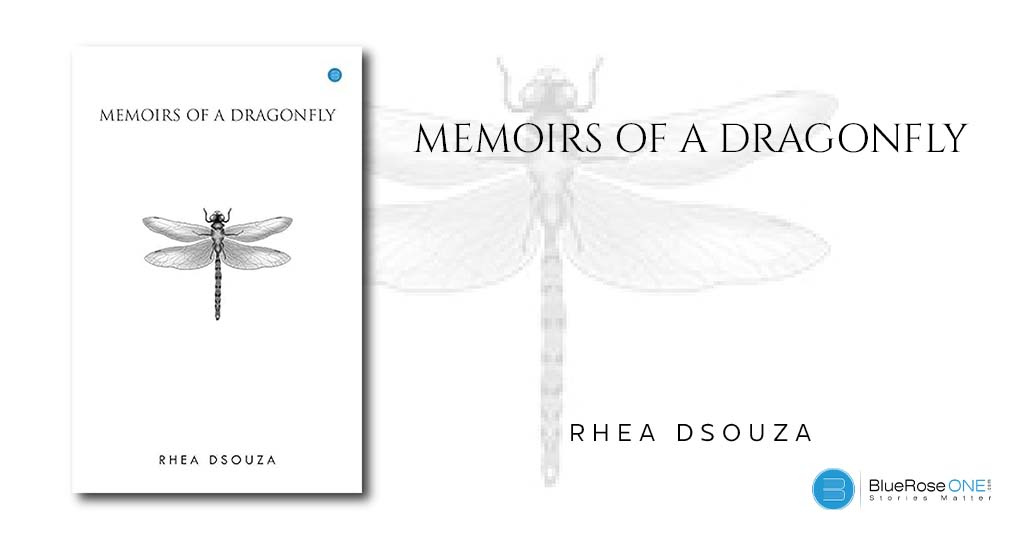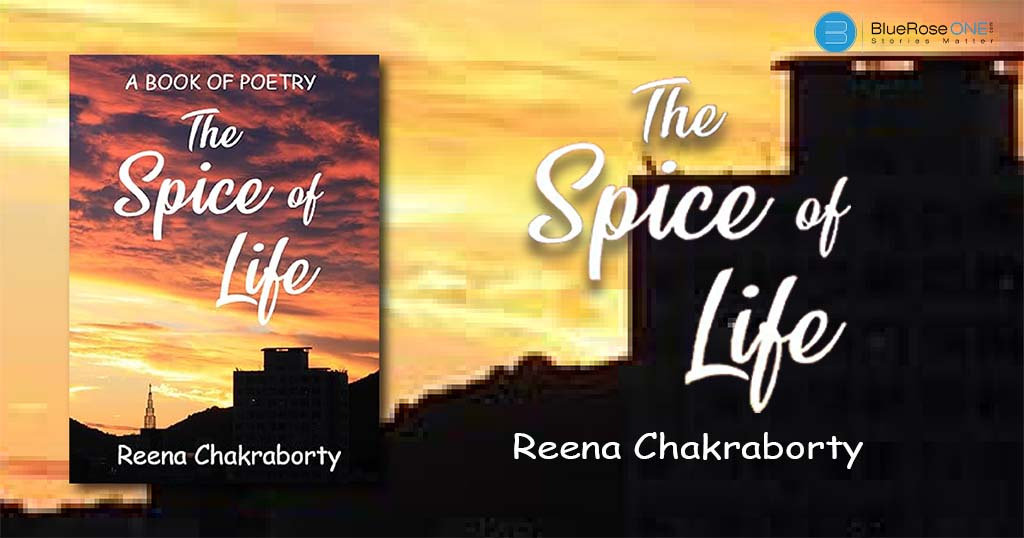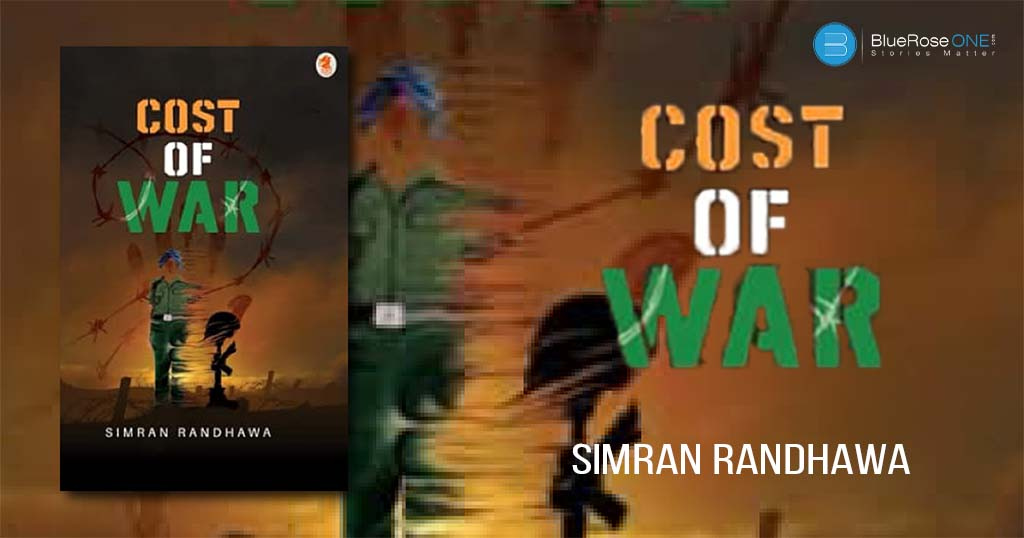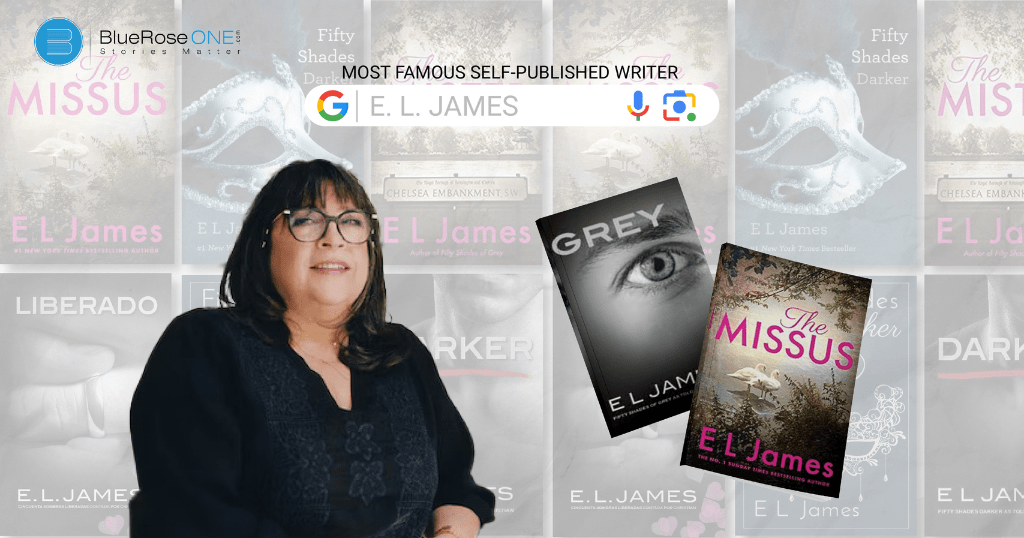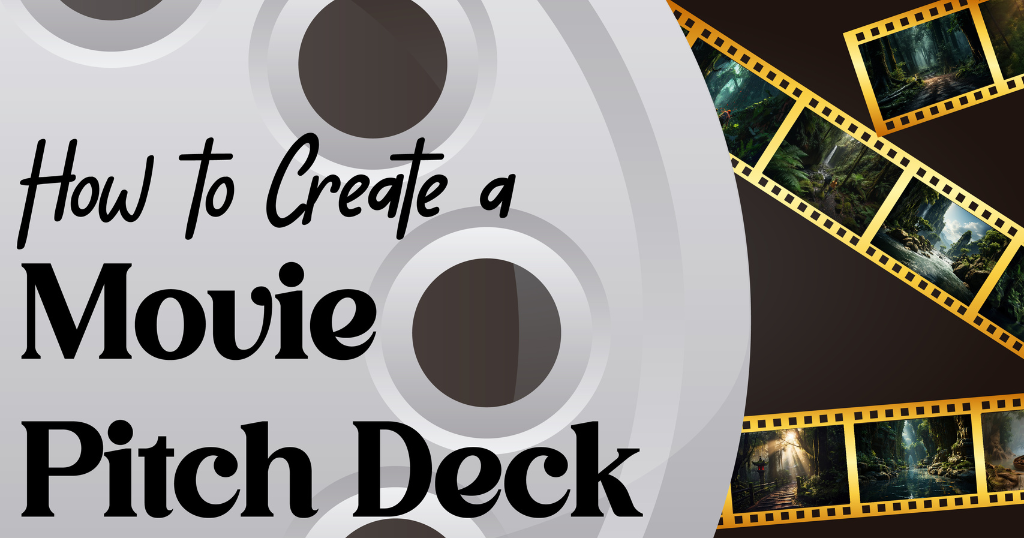
How to create a movie pitch deck of books?
In the dynamic world of filmmaking, where ideas are the currency of creativity, adapting books into movies has become an increasingly popular trend. This intersection of literature and cinema allows filmmakers to tap into captivating narratives, well-developed characters, and established fan bases. However, the journey from a beloved book to a compelling movie requires careful navigation. One essential tool in this process is the movie pitch deck, a comprehensive document that captures the essence of the book and communicates its cinematic potential. In this blog post, we will unravel the art of creating a movie pitch deck for books, providing aspiring filmmakers and producers with a roadmap to transform literary treasures into cinematic gems. Understanding the book Before delving into the intricacies of creating a movie pitch deck, it is crucial to thoroughly understand the source material—the book. Whether it’s a classic novel or a contemporary bestseller, the nuances of the narrative, character arcs, and thematic elements must be grasped. Take note of the tone, atmosphere, and unique elements that make the book special. This deep understanding will be the cornerstone of your pitch deck, guiding every decision throughout the adaptation process. Identifying cinematic potential Not every book is automatically suited for the big screen. A critical aspect of crafting a successful movie pitch deck is identifying the cinematic potential within the source material. Consider the visual elements that can be translated effectively: compelling settings, vivid characters, and dramatic plot points. Evaluate the book’s storytelling structure and determine if it lends itself well to a cinematic narrative. This assessment will guide your pitch deck towards highlighting the aspects that make the story inherently cinematic. Structuring the Movie Pitch Deck A well-structured movie pitch deck is the key to grabbing the attention of potential investors, producers, and collaborators. While there is no one-size-fits-all template, a comprehensive pitch deck typically includes the following sections: Introduction:In the introduction section of a movie pitch deck for a book adaptation, it is crucial to provide a compelling overview of the book, its author, and its significance in the literary world. Begin by introducing the author, detailing their background, style, and notable works. For instance, if the book is a bestseller or has won prestigious awards, this is the place to mention it. Emphasise the author’s influence on literature and any dedicated fan base they may have.Example: “Jane Doe, a celebrated author known for her evocative storytelling, penned the gripping novel ‘Shadows of Eternity.’ With a writing style that seamlessly blends suspense and introspection, Doe has amassed a dedicated fan base globally. ‘Shadows of Eternity’ has not only garnered critical acclaim but has also been honoured with the prestigious XYZ Literary Award, solidifying its significance in contemporary literature.” Synopsis:The synopsis is the heart of the movie pitch deck, providing a concise yet enticing overview of the story. Focus on the main plot points and central conflicts, ensuring to highlight the universal themes that make the narrative relatable to a broad audience. Dive into the emotional core of the story, giving potential collaborators a taste of the emotional journey the audience will embark upon.Example: “‘Shadows of Eternity’ follows the tumultuous journey of Emily, a young artist who discovers an ancient artefact that unravels a hidden realm. As she grapples with the responsibility bestowed upon her, Emily must navigate a world of deceit, betrayal, and self-discovery. The central conflict revolves around the battle between light and darkness, echoing universal themes of resilience, redemption, and the enduring human spirit.” Visual Elements:Incorporating visuals into the movie pitch deck is essential to conveying the essence of the book visually. Utilise concept art, mood boards, or carefully selected images representing key scenes. These visuals should not only capture the aesthetic of the story but also showcase the potential for stunning cinematography, enticing potential collaborators with the prospect of a visually striking film.Example: “Visual elements in ‘Shadows of Eternity’ are designed to transport audiences into a mesmerising world where ancient ruins intertwine with modern cityscapes. Concept art depicting the juxtaposition of light and shadow, along with mood boards illustrating the rich palette of emotions, promises a cinematic experience that is as visually captivating as it is narratively compelling.” Character Profiles:Introduce the main characters in a way that goes beyond their surface-level traits. Briefly describe their roles in the story, highlighting the complexities that make them compelling. Emphasise character arcs and development, focusing on elements that would translate well to the cinematic medium.Example: “Meet Emily, the resilient protagonist of ‘Shadows of Eternity,’ whose artistic journey mirrors her personal growth. As she grapples with the weight of her newfound destiny, her transformation becomes a poignant exploration of inner strength and courage. Supporting characters, such as the enigmatic guide and the formidable antagonist, add layers to the narrative, promising a cinematic ensemble that will resonate with audiences.” Market Analysis:Conducting a thorough market analysis is a crucial step in showcasing the potential audience for the movie adaptation. This involves understanding the demographics, preferences, and size of the target audience. For example, if the book falls within the young adult fantasy genre, it’s essential to identify the age group that predominantly consumes such content. Utilising market research data, surveys, and social media analytics can help in defining the potential audience.Additionally, identifying similar successful adaptations provides tangible evidence of the market’s appetite for such content. For instance, if the book falls into the fantasy genre, citing the success of the “Harry Potter” or “The Lord of the Rings” film franchises would strengthen the case. By showcasing box office performances, it becomes evident that there is a proven demand for this type of content, increasing its appeal to potential investors and distributors. Budget Overview:Providing a comprehensive budget overview is essential for transparency and planning. This involves estimating the budget required for various aspects of the adaptation, including pre-production, production, post-production, marketing, and distribution. For example, if the adaptation involves elaborate set designs or visual effects, these aspects should be reflected in the budget breakdown.A major expense breakdown is crucial…
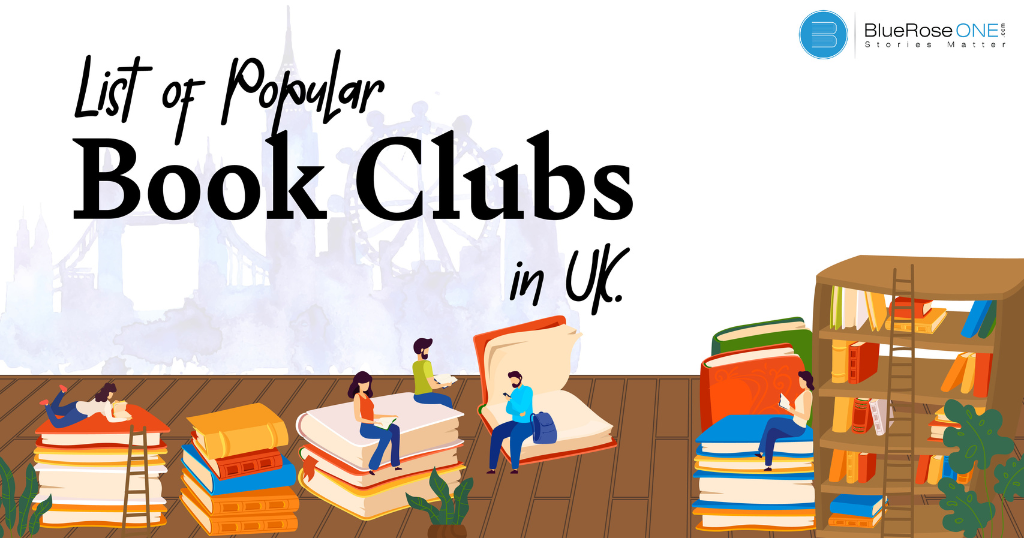
Top 10 Book Clubs in the UK That You Must Join in 2024
Book clubs in UK are steady pillars of community participation, creating a common love of literature in a world where internet connections are the norm. With its extensive literary history, the UK is home to a plethora of book clubs that appeal to a wide range of interests. We’ll explore the colourful fabric of well-liked book clubs throughout the UK in this guide, giving readers access to a carefully selected selection of events that commemorate the love of reading. Read: A Complete list of popular book libraries in the UK that you must visit in 2024 Here is a list of the top book clubs in the UK 2024 that you absolutely must join if you’re someone who literally smells the pages of books, consumes books, or is caught with one on your face while you’re sleeping: The Literary Lounge Book Club The Silent Book Club The Feminist Book Club Daunt Books Publishing Group The Pigeonhole Book Club The Literary and Philosophical Society Book Group The Black Girls Book Club The Glasgow Science, Fiction, and Fantasy Book Club The Willoughby Book Club The Agatha Christie Book Club 1. The Literary Lounge Book Club The Literary Lounge Book Club is a haven for book lovers, tucked away in the heart of London’s literary scene. This prestigious club is a refuge where members can enjoy a friendly environment and get lost in stimulating conversations. The Literary Lounge is unique in that it favours a variety of genres, making sure that its patrons get a well-rounded literary experience. The club’s dedication to accepting both modern and classic books enhances the diversity of its reading choices, appealing to a wide range of literary preferences. One of The Literary Lounge’s main commitments to building a thriving reading community is holding regular gatherings. Members get the chance to contribute their opinions, observations, and insights about the chosen works at these get-togethers. The club’s commitment to delving into a range of issues guarantees that every gathering offers a novel viewpoint and keeps the literary conversation lively. The Literary Lounge Book Club offers a space for readers in the heart of London to interact, exchange, and celebrate the wide world of literature—whether they are immersed in the timeless classics or the newest literary discoveries. You may also read: List of Nobel Prize Winners in India (Updated) Book Clubs in Delhi 2. The Silent Book Club With its distinctive approach that meets the needs of those who find comfort in reading in quiet company, The Silent Book Club reimagines the conventional book club experience. This group, which has locations around the UK, including thriving cities like Manchester and Edinburgh, welcomes members to bring books they are currently reading and participate in an hour-long silent reading session. One unique aspect that distinguishes The Silent Book Club from traditional book clubs is this silent intermission, which provides a calm and reflective setting for personal literary discovery. After the pause, the mood shifts to one of group sharing. Participants are given the chance to break their silence and strike up discussions in which they can exchange ideas, suggestions, and literary finds. This well-balanced combination of reading alone and the ensuing socialising produces a distinctive and welcoming literary experience. Thanks to its creative approach, the Silent Book Club not only respects the wide range of reading tastes among its members, but it also helps people who enjoy books get to know one another better. This club offers bookworms a safe refuge where they may congregate and enjoy the quiet pleasure of reading with like-minded people in cities all around the UK. You may also like: Top 10 Best Biographies of All Time Book Clubs in the UK 3. The Feminist Book Club The Feminist Book Club shines as a symbol of empowerment and inclusivity, establishing a crucial forum for literary analysis from a feminist perspective. This vibrant club welcomes members from all around the United Kingdom and operates both online and in person. Its dedication to supporting feminist writing extends beyond the book’s pages, encouraging thought-provoking discussions that explore the subtleties of gender, equality, and empowerment. The Feminist Book Club’s carefully chosen reading list, which includes both modern studies that represent the field’s changing terrain and classic feminist works that helped establish gender discourse, is what makes it unique. Members converse in ways that go beyond traditional book discussions, exploring cultural influences, societal conventions, and introspective thoughts sparked by the selected works. This group serves as a forum for people who are enthusiastic about feminist literature to interact, exchange viewpoints, and deepen their awareness of gender-related topics. It also serves as a stimulus for intellectual progress. You may also like: The Rise of Shakti by Megha Dinesh: Book Review You may also read: 100+ Adjectives That Start With N (With Examples & Definitions) Book Clubs in the UK 4. Daunt Books Publishing Group Tucked away in the centre of Marylebone, the flagship Daunt Books store is a literary haven for bookworms, and its book club, the Daunt Books Publishing Group, is modelled around this intellectual utopia. This esteemed group meets once a month and welcomes participants into a world of well-chosen books that cut across borders. The club is unique in that it offers a literary journey that mirrors the wide range of interests and cultural backgrounds of its members due to its dedication to worldwide literature. The immersive nature of Daunt Books Publishing Group’s book discussions sets it apart. In addition to reading the chosen books, members get to talk with the authors when they are published. These conversations offer distinctive perspectives on the writing process, the sources of inspiration for the pieces, and the larger literary canon. A distinctive reading community where members can discover the world via the pages of well-selected books is fostered by the club’s commitment to embracing the richness of global literature and transcending national boundaries. This club transforms into a crossroads of cultures in the heart of Marylebone, encouraging readers to go on an infinite literary adventure. You may…
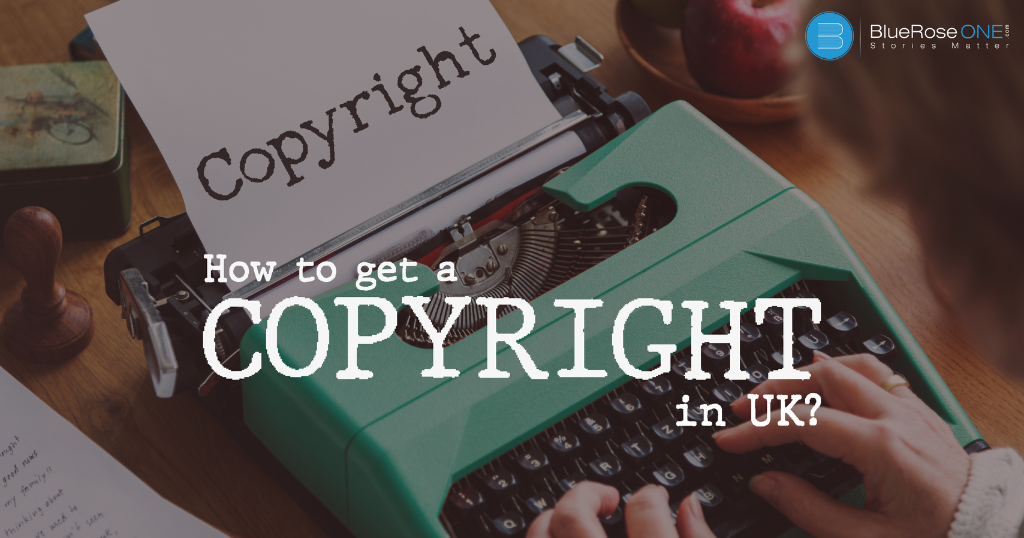
Protect your book now with copyright in the UK
In the UK, obtaining a copyright is an essential first step in safeguarding your artistic creations. You have the sole right to use, copy, and distribute your work as long as it is protected by copyright. It is imperative for all creators, be they writers, musicians, artists, or in any other industry, to know how to obtain copyright. We’ll take you step-by-step through the UK copyright application process in this tutorial. Software, databases, music, art, literature, and other original works of authorship are all protected under the Copyright, Designs, and Patents Act 1988 in the United Kingdom. It grants authors the sole authority to decide how their works are used, to be acknowledged for them, and to profit financially from them. Read: A Complete List of Popular Book Libraries in the UK – 2024 Guide. If your work isn’t protected by copyright, anyone could use it without your consent, and you could not get paid or given credit for it. A vast variety of creative works are covered under copyright, including: Literary pieces, such as books, essays, and poetry Pieces of music, such as songs and compositions Artistic creations, such as sculptures, paintings, and drawings Dramatic pieces, such as dance choreography and plays Videos and Movies Audio recordings Transmissions Podcasts How your work is protected by copyright Copyright prohibits anyone from: Copying, distributing, renting, lending, selling, or giving copies of your work Performing, exhibiting, or playing it in public Creating an adaptation of your work posting it online A Guide to Obtaining Copyright in the UK: Create your work. The initial stage in the process of copyright protection is creating your work. It entails bringing your thoughts and ideas to life in a material way through writing, painting, or recording. Copyright law gives you the exclusive right to use and distribute your product, protecting this tangible expression. The process of creation, whether it be writing a book, making music, or creating a logo, is what gives you ownership and control over your intellectual property. It’s a creative and innovative moment that prepares your work to be shared with the world while maintaining its distinctiveness. Copyright Ownership Producers and consumers of creative works need to comprehend copyright ownership. The inventor of a work is usually the first owner of the copyright in the UK. There are, however, some exceptions. For example, if an employee creates a work while on the job, the employer is the rightful owner of the copyright. Knowing these subtleties is crucial to knowing your rights and obligations when it comes to using other people’s creative works or your own. It guarantees that you uphold the rights of copyright owners and assists you in navigating legal matters like licencing and infringement. Label Your work A straightforward yet powerful technique to stand up for your rights as the author is to label your work with a copyright notice. The year of publication, your name, and the copyright symbol (©) let others know that your work is shielded from infringement by copyright laws. Although copyright protection is automatically applied at the time of creation, marking your work can help prevent infringement and facilitate ownership verification in the event of a dispute. It also demonstrates your value for your intellectual property and aids in people recognising you as the author. All things considered, marking your work is a proactive measure to safeguard your intellectual rights. Publish Your Work An optional but important first step in safeguarding your creative rights is registering your work with the UK Intellectual Property Office (IPO). Although copyright is automatically protected at the time of creation, registration makes your copyright publicly known and can serve as further proof of ownership in the event of a dispute. Additionally, it may make it simpler for you to defend your copyright in court. Further financial security may be obtained for registered works through their eligibility for statutory damages and attorney fees in successful infringement lawsuits. In general, registration provides more assurance and a more solid legal basis for your artistic Global Protection If you intend to share or market your creative work internationally, you should think about international protection. Although many nations automatically grant copyright protection, every nation has its laws and policies about intellectual property rights. Through international treaties and agreements, copyright registration with the World Intellectual Property Organisation (WIPO) can offer a practical means of protecting your work across national borders. This can help guarantee that you can assert your rights globally and that your work is protected from unauthorised usage. It’s a proactive move to safeguard your artistic endeavours worldwide. Preserving your copyright Preserving your copyright is essential for protecting your creative rights and ensuring that others respect your intellectual property. If you believe someone has infringed on your copyright, you can take legal action to stop them and seek compensation for damages. This typically involves sending a cease-and-desist letter, demanding that the infringing party stop using your work without permission. If necessary, you may need to file a lawsuit to enforce your rights in court. By taking prompt and decisive action to enforce your copyright, you can defend your creative work and uphold the integrity of intellectual property laws. You may also like: Unlocking Success: Bluerose Publisher’s Best Amazon KDP Books In the UK, obtaining a copyright is a simple procedure that starts the moment you produce your work. Although it is not required, registration can offer more security and proof of ownership. You can safeguard your creative works and make sure you get credit and payment for your work by learning the fundamentals of copyright and taking the necessary actions. It’s crucial to keep in mind that copyright protection encompasses more than simply legal rights; it also involves appreciating and honouring other people’s artistic endeavours. In addition to protecting your creations, as a creator, you need to be aware of copyright laws to prevent infringement on the rights of others. This entails asking permission before using copyrighted content and, when appropriate, providing credit to the original creators. Read: How to Write & Publish…
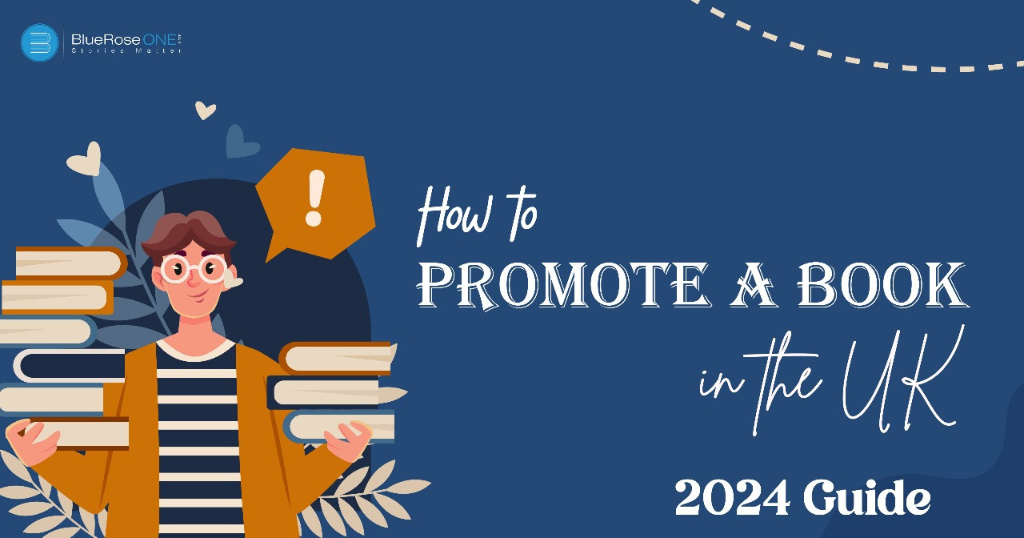
How to Promote a Book in the UK in 2024
In the dynamic realm of publishing, book promotion in the UK necessitates a blend of conventional and modern tactics to break through the clutter and connect with your intended readership. In 2024, the literary world will still be changing, with new platforms and trends influencing how writers interact with readers. We’ll look at tried-and-true strategies as well as new developments in this blog to assist you in successfully marketing your book in the UK. Success in the highly competitive publishing world of today depends on a book’s ability to be promoted well. The visibility and sales of your book can be greatly impacted by knowing the subtleties of book promotion in the UK, regardless of your level of experience as a writer. The literary styles and readership preferences of the UK book market are diverse and changing. Authors must use audience-resonant, creative, and focused marketing techniques to stand out in this competitive industry. Read: A Complete Guide on How to Publish a Book using Amazon KDP in the UK – 2024 Guide The emergence of digital platforms and social media in recent times has brought about a significant change in the marketing and promotion of books. With the abundance of internet tools and platforms available to them, authors may interact with readers, cultivate a following, and advertise their writing. But with so many alternatives at your disposal, navigating the digital landscape and figuring out the best book promotion techniques can be difficult. We’ll provide you with the strategies and resources you need to successfully market your book and connect with readers in the UK in 2024, from building a strong web presence to taking advantage of book launch events and participating in book clubs. Recognise Your Audience The foundation of every successful book promotion is an understanding of your readership. You may adjust your marketing to appeal to your target audience by learning about their reading preferences, hobbies, and demographics. You can learn more about your audience’s tastes by asking beta readers for input, conducting market research, and interacting with them on social media. Knowing your target can help you build messages that will grab their attention and convince them to buy your book through focused marketing efforts, appropriate channel selection, and effective messaging. Establish a Robust Internet Presence In the current digital era, authors who want to promote their novels must have a strong online presence. Having a website, blog, or social media presence as an author can facilitate communication with readers, fan cultivation, and book promotion. Your online presence should reflect your personality and brand, and it should interact with your audience with interactive elements, behind-the-scenes information, and frequent updates. You can reach a worldwide readership and build a community of devoted readers who are ready to support your work by utilising online platforms. Make Use of Book Launch Events A well-planned book launch party may create a lot of talk and excitement about your book, which can boost visibility and sales. A book launch is an opportunity to engage with your audience, present your book, and create anticipation—whether you decide to hold it virtually online or in person at a neighbourhood bookstore. Consider partnering with other writers or influencers, inviting friends, family, and fans, and providing exclusive promotions or giveaways to ensure the success of your book launch. Using book launch events to your advantage will help your book gain traction and get off to a successful start. Use Book Endorsements and Reviews Book recommendations and reviews are essential for increasing your book’s legitimacy and sparking interest. Good reviews from reliable sources can influence prospective buyers and raise awareness of your book. Reach out to book bloggers, reviewers, and influencers in your genre and offer them a free copy of your book in exchange for an honest review if you want to make the most out of book reviews and endorsements. To give your work credibility, you can also ask well-known writers or industry professionals for endorsements. You may generate excitement about your book and draw in additional readers by making use of book reviews and endorsements. Join Hands with Neighbourhood Bookstores Local bookstores can be very helpful partners in the promotion of your book, particularly if you’re aiming for a particular region. You can organise book signings and readings, reach out to local readers, and increase your visibility in the community by collaborating with neighbourhood bookstores. Make contact with local independent bookshops to find out about possible joint ventures. Offer to give autographed copies of your book, take part in literary gatherings in the area, or work with others on marketing initiatives. By collaborating with neighbourhood bookshops, you can take advantage of their already-existing clientele and raise awareness of your book in the neighbourhood. Interact with Reading Groups and Book Clubs Work clubs and reading groups are great ways to get the word out about your work and establish connections with individuals who have a strong interest in literature. Participating in book clubs can help spread the word about your book and boost its visibility. Make contact with online and local book clubs that are interested in your genre or topic and offer to lead discussions or contribute reading selections. Book club members may also be eligible for exclusive discounts or promotions, which will encourage them to pick your book as their next read. You may build a devoted fan base that will help promote your book and support your future endeavours by interacting with book clubs and reading groups. Make the Most of Literary Awards and Competitions Your book’s visibility and credibility can be greatly increased by entering contests and book prizes. Gaining acknowledgement and reinforcement for your work through an award, whether you win it or make the shortlist, can boost sales and garner media attention. When submitting a book for consideration, do your research to find pertinent book awards and competitions in your genre or category. To increase your chances of success, make sure you pay close attention to the submission requirements and dates. You…
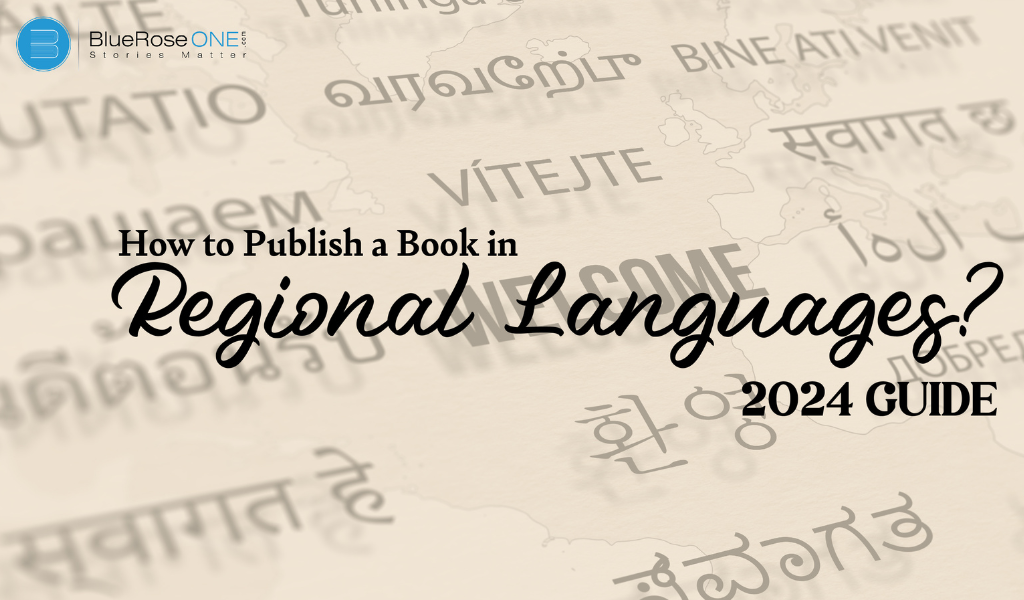
How to Publish a Book in Regional Languages – 2024 Guide
The publishing industry has seen a radical transformation as more people become aware of the rich diversity of regional languages. We’ll go over the procedures and factors to take into account when publishing a book in a regional language in our 2024 guide. With tips on using digital platforms and embracing linguistic variety, this guide aims to enable prospective writers to reach a wider readership. Here are Some Steps on How to Publish a Book in Different Regional Languages – 2024 Identify Your Target Audience Choose the Right Regional Language Understand the Regional Publishing Industry Craft Your Manuscript Collaborate with Regional Editors and Translators Build a Strong Author Platform Explore Regional Publishing Houses Why Consider Self-Publishing Engage in Literary Festivals and Events Utilise Online Distribution Channels Promote Your Book Effectively Seek Media Coverage Identify Your Target Audience The first step in entering the complicated world of publishing is to carefully determine who your target market is. This crucial first stage entails gaining a thorough grasp of the interests and demographics of potential readers who speak the regional language you want to concentrate on. Understanding your audience’s distinct qualities is essential to creating material that suits their tastes. Reader choices are greatly influenced by demographic parameters, including age, gender, educational background, and socioeconomic level. For example, an older, rural audience may be more interested in traditional storytelling with a strong cultural past, whereas a younger, urban audience may be more drawn to contemporary subjects. Finding out about the particular interests of the target population through market research or surveys can be quite beneficial. Additionally, you may produce content that connects with your audience more deeply by learning about their psychographics, which include things like lifestyle, values, and cultural influences. Writing to the expectations of your readers—whether they are fans of romance, historical fiction, or socially conscious themes—builds a closer bond between the writer and the reader. Choose the Right Regional Language For authors hoping to publish in regional languages, India, a melting pot of varied cultures and languages, offers both a unique difficulty and an opportunity. The nation is home to several different languages, each with a rich literary history of its own. Selecting the appropriate regional language is a complex process that requires striking a careful balance between readership viability, storytelling requirements, and personal connection. First and foremost, writers must to take into account their linguistic and personal backgrounds. Writing in a language that speaks to their cultural heritage frequently gives the story more authenticity and fosters a closer relationship with the reader. Furthermore, a particular regional language may contain the genuine substance of the story you wish to portray, adding local subtleties, idioms, and cultural allusions to the story. But a personal connection by itself is insufficient. Writers are required to assess the possible audience for the selected language. Certain languages may speak to specialised populations, but others may have a large audience because of their historical or regional importance. Having a healthy readership guarantees that the time and energy put into creating a literary piece will be appreciated by a willing audience. The use of the local language is, all things considered, a nuanced yet crucial choice that balances the need for narrative coherence, reader response, and interpersonal relationships. Authors can start a publishing path that not only fits with their vision but also deeply connects with the target audience by carefully managing these factors. You may also like: Unlocking Success: Bluerose Publisher’s Best Amazon KDP Books Understand the Regional Publishing Industry Prior to diving into the nuances of writing and editing your novel, it is critical to have a solid awareness of the regional publishing landscape. Every regional language market has its own ecology, which includes different publishers, literary agencies, and routes of distribution. In order to successfully traverse this terrain, aspiring writers need to conduct thorough research and become acquainted with the major figures influencing the literary field. Find well-known publishing organisations that are experts in the language you have chosen for your chosen region. These companies are essential to getting books in front of readers. If they are common in the area, literary agents can be invaluable friends in negotiating the challenging process of getting a novel published. It is ensured that your book reaches its target audience by being aware of the distribution channels that are common in the area. Furthermore, it’s critical to stay abreast of the needs and trends in the language community. Writers can adapt their works to the pulse of the local literary community by keeping up with popular genres, new themes, and reader preferences. This information helps the publication process run more smoothly and puts the writer in a position to satisfy the intended readership. Craft Your Manuscript Now that you have knowledge of the local publishing scene, the next stage is to carefully craft your work. Developing a story that truly connects with the target audience requires careful consideration of the subtleties of the local language. The chosen regional language’s linguistic and cultural nuances must be thoroughly experienced by authors. This entails being aware of idioms, colloquialisms, and the language’s distinctive rhythm of expression. Working with a skilled editor or language specialist becomes essential if the author is not native in the target language. This collaboration guarantees cultural authenticity in addition to linguistic precision, enabling the story to blend in perfectly with the local culture. A manuscript that honours the linguistic subtleties of the local tongue improves the storytelling experience and strengthens the bond between the writer and the reader. It exhibits a dedication to providing a story that is both understandable and profoundly relevant in the cultural setting it aims to enter. Collaborate with Regional Editors and Translators Working with local editors and translators is an essential part of the collaborative process of making your book come to life, particularly in cases when the author is not a native speaker of the target language. Since these specialists are native speakers, their degree of competence is crucial…

